How to Grind Coffee Beans the Right Way
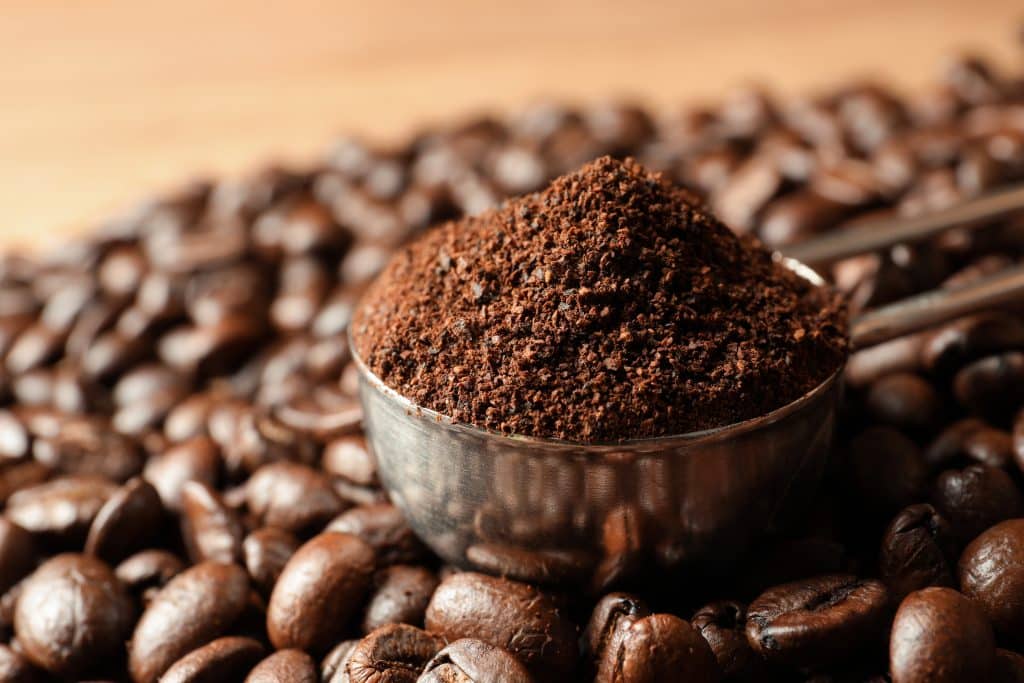
The best way to start your morning is — you guessed it — a freshly brewed cup of Joe. Everyone who drinks coffee daily knows that the quality of your coffee in the morning will set the mood for the rest of the day, so you need to ensure this cup is everything you like your coffee to be.
Every coffee connoisseur knows that in order to make the best cup of coffee, you need to be grinding your coffee beans fresh at home.
While grinding coffee beans at home might sound intimidating and tiresome, the fresh coffee aroma that envelops your kitchen during the process alone might be worth it. It also gives you the best-tasting in-house coffee you’ll ever have!
Grinding coffee beans is a fairly simple ordeal, but it can be easy to mess up. To make sure you don’t do that, read this article! This is a know-it-all guide to bean grinding.
Why You Need to Grind Your Coffee Beans
Before jumping into the know-how of the entire grinding process, let me tell you exactly why grinding your coffee beans at home might be a good idea for you!
- Grinding coffee beans makes it easier to extract coffee! In ancient times, people used to boil whole coffee beans in water. This would result in bitter, highly caffeinated, weird-tasting coffee.
- It shortens the brewing time, making it a quick process.
- Uniform extraction! Grinding beans properly brings them all to uniform particle size. This means that the extracted coffee is properly processed and tastes good.
- You can alter the size of the grind to get the type of coffee you prefer.
Choosing the Right Type of Grinder
Before we step into the process of grinding beans, it’s important to choose the right type of coffee grinder. In due time, you’ll realize that your coffee grinder might just be one of your most prized investments.
To review it quickly, there are two main types of coffee grinders:
Blade Grinder
Pretty self-explanatory. This type of grinder uses a blade to chop up the coffee beans into finer particles. These types of grinders basically pulverize your coffee beans and often result in uneven grounds.
Blade grinders are generally cheaper, but the inconsistent grind size usually puts them at the bottom of the list for preferred coffee grinders.
However, if you’re on a tight budget, using a blade coffee grinder is better than using your everyday blender for the job.
Burr Grinder
A burr grinder uses a pressure-inducing mechanism to thoroughly grind coffee beans.
A burr grinder is usually considered superior to a blade grinder in terms of controlling the grind size and getting evenly ground beans.
Not to confuse you, but there are two types of burr grinders out there: conical and flat disk burr grinders. Let me explain them to you in simple terms:
Flat Disk Burrs
Flat disk burrs are made of two rings that are aligned horizontally. You can often adjust the distance between the rings to determine your grind size.
These types of grinders are great for uniformly sized grounds.
However, they have the disadvantage of retaining more heat, which can be a problem if you’re grinding beans more than once a day, like in a cafe setting for example. The heat from the grinder can cook/burn the beans, altering their taste.
Another problem with flat burrs is potential coffee retention. Over time, this can alter the taste of your coffee. This is because older, staler coffee grounds get mixed with the new ones, contaminating them.
In terms of ease of usage, flat burr grinders tend to be noisier since they run at a higher RPM.
Conical Burrs
Conical burrs are designed with two cones that atop each other. The surface between the two cones has angled teeth to help with the grinding process.
The grind size from conical burr grinders can be a little inconsistent compared to flat burr grinders. However, the difference usually isn’t that big of a deal.
On the other hand, heat retention and noise are less of an issue with conical burrs since they work at a slower RPM.
Due to the conical shape, less coffee is retained within the burrs, lowering the rate of possible contamination.
Final Word on Grinders
Ultimately, there is a lot more to a coffee grinder than its burr shape. It comes down to the overall build, construction quality, and how you tend to use it. The material of the burrs also plays an important role in its overall functionality.
While ceramic burrs stay sharp for a longer time, they are prone to damage by stone or other small contaminants. Steel burrs can grow blunt over time, but they are more durable.
Both of these types of grinders can either be automatic or manual. Automatic ones use a motor to get the job done and are better if you’re in a rush and have to grind quite a lot of beans.
It all comes down to personal preference and product options. It’s always good to research in detail.
Hand Grinders
If you’re not entirely sold on the idea of investing in a proper coffee grinder, you can go for a cheaper alternative: a manual burr coffee grinder.
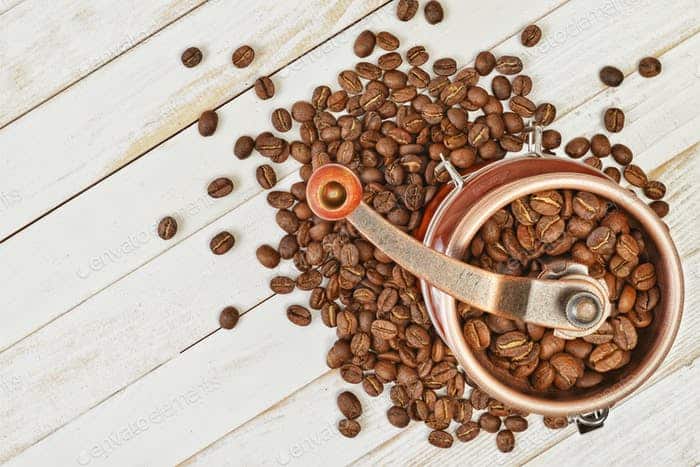
For best results, get a hand grinder made with a base that’s sturdy and durable. Ceramic, wood, and steel are good material options to consider. You might also want to look at the material of the burrs. Steel burrs are preferred over ceramic ones for consistency and efficiency.
Another important thing to consider is the capacity of the grinder. If you’re grinding beans for a cup or two, you should be fine with most hand grinders. But if you need to grind more than that, look for a hand grinder that is made to handle it.
Hand grinders have a rotatory blade you move around to grind the beans. These are great for when you’re traveling or hiking and don’t have a power supply. They can also be used at home if you’re only making coffee for one.
If you have a good volume of beans to grind daily and are short on time, then it might not work all that well for you.
Determining Your Perfect Grind Size
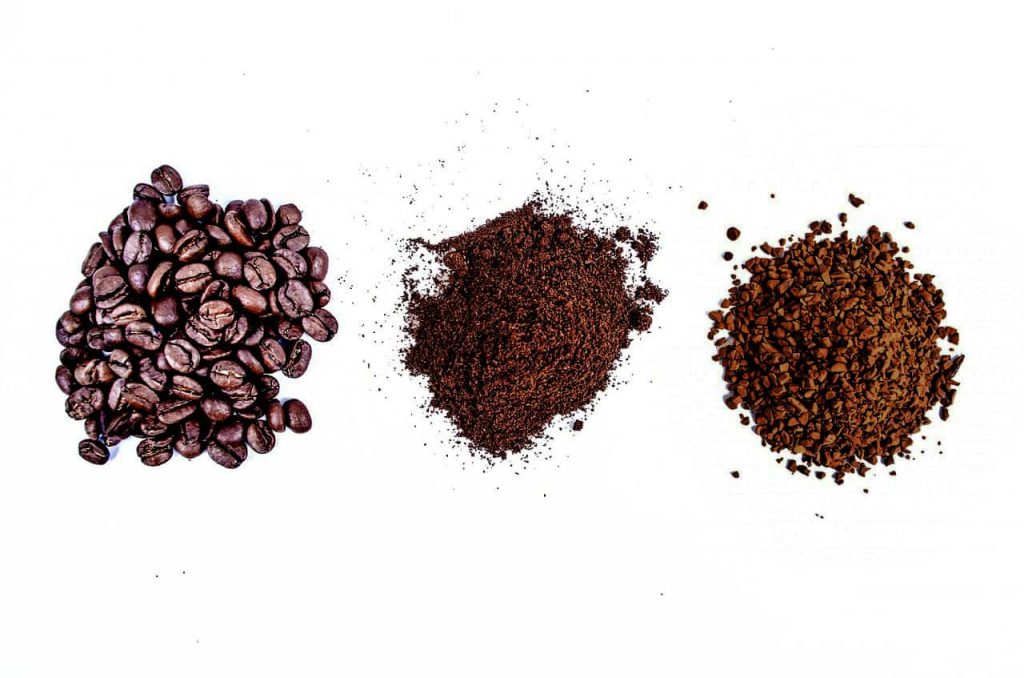
If you’re used to buying pre-ground coffee, you’re probably familiar with the different grind sizes.
In short, grind size refers to the coarseness of your coffee beans. It determines the taste of your coffee. You know the drill: The finer the grind, the stronger your coffee.
Let’s take a quick look at the different type of grinds:
- Coarse: The largest grind there is; it’s great for making coffee using a percolator or a French press
- Medium-Coarse: These are quite popular and work well for drip press and vacuum coffee makers
- Fine: Basically espresso grind; works well with filter brew and electric drip coffee makers
- Extra-Fine: Not very popular in this part of the world, but this is a special type of grind used for extra-strong coffee like the Turkish kind
Knowing the type of grind you need will make it easier to find the right grinder and determine its settings accordingly. You can always experiment with different grind sizes until you find one that really works for you.
Get the Right Type of Coffee Beans
When we’re talking about raw materials, it’s necessary to mention coffee beans! No matter how meticulously you grind your beans, if you have the wrong kind of coffee beans, you’ll never get the results you’re looking for.
The origin, type of roast, and packaging are all factors that can strongly influence the taste of your coffee.
How to Grind Coffee
Since ground coffee is so important to ensure a fresh brew, you should know how to grind your beans at home. Whether you are using a blade grinder, burr grinder, or even a manual-styled grinder, your method matters.
The most important step is, if possible, to grind up your beans right before you are ready to brew the coffee. This means you are getting optimal freshness from your coffee beans.
As soon as the beans are ground they begin to oxidize, which releases those strong coffee flavors you love so much. Old ground coffee will lack the bold flavors you crave as you begin brewing your coffee.
Grinding with an Electric Grinder
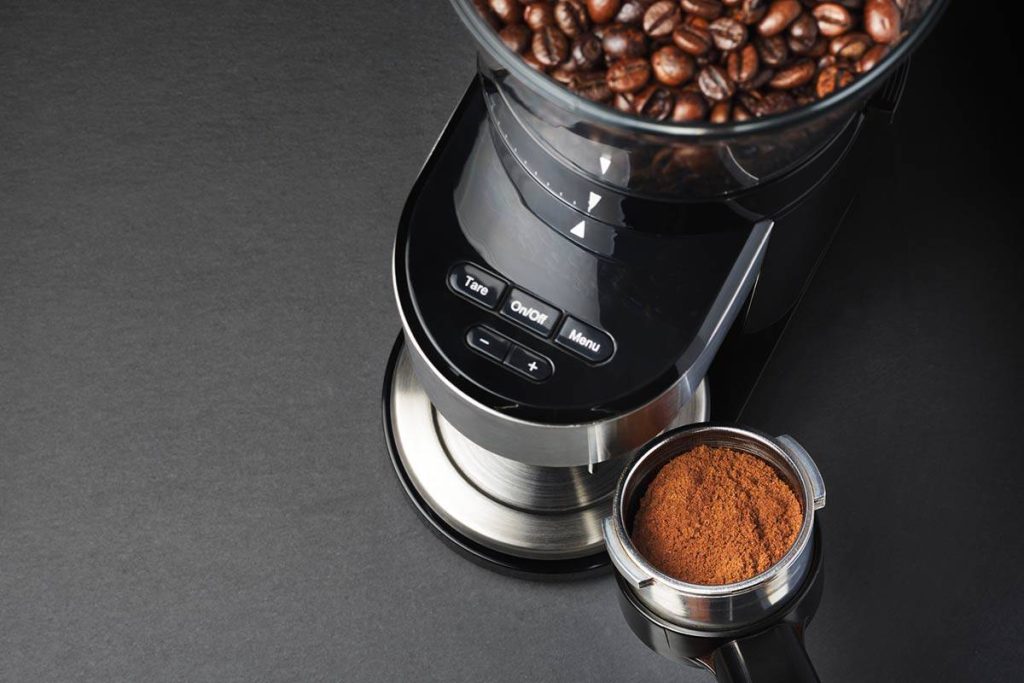
First, let’s talk about how to grind up your favorite beans with an electric grinder. This is the quickest way to get those grounds ready for brewing and usually doesn’t take too much effort on your part.
Step 1: Make Sure the Grinder is Clean
If you haven’t used your grinder before, you should clean it out by priming the grinder. You need to run a few coffee beans through the machine and throw these grounds out. This step will remove any dust in the grinder as well as add just enough coffee oil for premium grinding.
Step 2: Measure Out the Right Amount of Beans
Measure out how much coffee beans you require for your brew. Even though many electric coffee grinders have large chambers for coffee grounds, you shouldn’t necessarily be filling this. So only measure what you need for now — around 10 to 15 grams of beans for every cup you’re making.
Step 3: Place Beans in the Bean Hopper
The hopper is usually situated at the top of the machine. You can add a little extra to the bean hopper if you are worried about losing out on some bean dust that may get lost during grinding.
Step 4: Check the Grind Setting
The next step is to ensure all your settings are correct. You may need to check your machine’s manual if you get confused. First, set the amount of coffee you want to grind—this is usually measured in cups, but it could be based on a timer system. Then select your desired grind size, which ranges from super fine to super coarse.
Step 5: Start the Grind
Click the start button and get ready to brew up some freshly ground beans with whichever brew method you have chosen. Remember that fine grinds are great for espresso; the medium is perfect for a French press; and coarse grinds are great for cold brews and percolators.
Grinding with a Manual Grinder
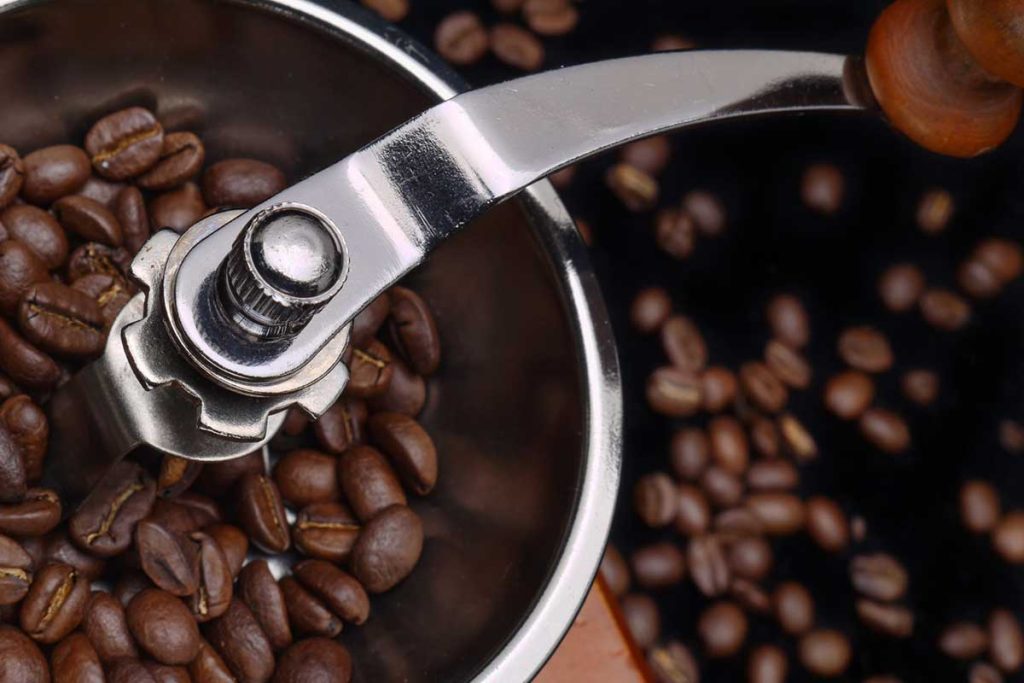
The manual grinding method requires a bit of elbow grease to get the beans ground up nicely, but the steps are simple and quick. Usually, the manual grinders are quite small and this is perfect for grinding just the right amount of beans for your coffee.
Step 1: Set the Grind Size
Begin by setting the grind size on the manual grinder. You may need to check the manual for this setting as some grinders can be tricky. Certain models contain the grind settings inside the chamber and require you to click it to the right setting.
Other grinders have an easier size setting located on the lid. So first find this switch and choose your grind size before getting your beans ready.
Step 2: Measure out the Beans
Measure out your beans and add them to the bean hopper on the manual grinder. Remember to only add as much as you need to ensure maximum freshness — again, this is about 10 to 15 grams per cup of brew.
Step 3: Get Cranking
Start manually grinding your beans by turning the hand crank until all the beans have filtered through to the grounds chamber. If you can’t see any beans left in the hopper, give a few more turns to ensure none were hiding in the middle section of the grinder.
Step 4: Empty the Grounds into Coffeemaker
Empty the grounds and brew up your delicious cup of joe, freshly ground by you.
How to Do It Without a Grinder
Yes, you can grind coffee beans without a grinder and get decent results.
Using a Food Processor
While it won’t give you the best results, a food processor might just work well. Make sure your blade is sturdy enough to handle the beans.
Here’s what you need to do:
- Plug in your food processor and fix the blade into it
- Put the beans into the food processor
- Cover the lid
- Using the pulse setting, grind the beans in five-second increments
- If needed, shake the container from time to time to make sure it’s all evenly ground
Empty the ground beans into an air-tight container or Ziploc plastic bag. For best results, grind right before using them.
Using a Blender
While it’s not something I would recommend using, a blender should work if you have nothing else to use.
- Plug your blender in
- Place the beans into the blender
- Fix the lid into place
- Use the medium-high setting or the pulse setting to grind the beans in three- to five-second increments
- Make sure you don’t blend the beans for too long as this will cook or burn the beans
- Tilt the blender side to side to ensure a uniform grind
And that’s it! These alternatives should work if you have no other options.
However, if you happen to have none of these appliances at hand, you just gotta use your hands and do this the old-fashioned way by following the methods detailed below.
Using a Mortar and Pestle
This isn’t the most time-efficient method, but it works surprisingly well to get a finer grind.
- Fill your mortar about ¼ of the way
- Place it on a stable surface and hold on to it tightly
- Use the pestle in a circular motion to evenly grind the beans
If you don’t have this old-fashioned tool at hand, try the next method.
Using a Rolling Pin
You can’t really use this method every day, but it should work fine for a once-in-a-while experiment.
- Use a sturdy plastic or clothing bag to hold the beans in; make sure it’s super clean to avoid any kind of contamination
- Make sure there’s no air in the bag since it will pop and rupture, sending ground beans all over your kitchen
- Use a rolling pin to gently apply pressure on the bags to grind them
- Do this until all the beans are ground to your desired consistency
FAQs
What’s the best way to grind coffee beans?
While it depends on personal preference, the unanimous vote is that a conical burr grinder gives you the best ground. The ground beans are uniform in shape and size, plus they hold more flavor.
It’s also easier to keep clean since it retains less coffee, heats up less, and is less noisy!
A lot of coffee experts recommend using a conical burr for the best results.
Does grinding coffee finer give it a stronger taste?
The general rule is that the finer you grind your coffee, the more it will be extracted.
Coarse grinds are less extracted and less flavourful. As you keep decreasing the grind size, the coffee is extracted more and more.
This is why for stronger coffee variants like espresso, you need a finer grind size to extract the flavors accordingly.
Should you grind coffee beans all at once?
No, you shouldn’t! It’s recommended that you grind your beans fresh every day for optimum taste and freshness.
Grinding all your coffee ahead of time will make it stale by the time you get to use it.
Should I rinse coffee beans before grinding?
No, do not do that! It will make cleaning the grinder a nightmare and will also hasten the oxidation process for the beans, meaning they’ll spoil faster.
Can you brew coffee beans without grinding them?
Technically, you probably can. But using a good grinder will help speed up the process of brewing by increasing the surface area the beans are exposed to. This will result in a better, more flavorful extraction.
Can I grind my coffee beans the night before?
Grinding your coffee beans the night before will speed up the oxidation process and will cause them to lose their aroma and flavor.
However, if you tend to be in a rush most mornings, you can grind your coffee beans ahead of time. Just make sure to store them in an airtight container in a cool and dark place to preserve freshness.
How do I make my coffee less strong?
If you’re satisfied with the general flavor of the coffee, I suggest that you dilute the coffee with water, milk, or cream after it’s done brewing instead of tampering with the grind size. You can also decrease the amount of grind you use to brew a single cup of coffee.
Be sure to check the type of coffee beans you’re using as well. Arabica coffee beans tend to be sweeter and less strong, while Robusta coffee beans are stronger and more bitter.
Additional Tips
Now that you have the basics sorted, here are a few tips that might help you out!
- To make the most of your grinder, make sure you’re cleaning it properly every once in a while. This will prevent the build-up of any residue and will give you a fresh-tasting ground each time. It will also increase the life of your grinder, making it last longer.
- When using a blender or food processor to grind your beans, make sure you use the pulse setting to grind in small increments. Grinding the beans for too long will generate heat, causing them to burn and altering the flavor of your beans.
- Grind fresh beans daily (just before brewing) for best results. If you’re storing ground beans, be sure to do it in an air-tight container to prevent them from getting stale.
In Summary
Grinding your coffee beans at home is the first big step on the pathway to the best homemade coffee. So if you haven’t tried it out yet, this is your chance to get on the fresh-grounds bandwagon.
Freshly ground beans preserve the flavors better, resulting in an ideal cafe-level cuppa in the comfort of your home.
Be sure to use quality beans, a good grinder, and the right technique to get the best results! Happy grinding!
Owen is a writer and editor at Caffe Streets who considers himself a coffee fanatic. He spends his time researching and testing different coffee beans and brewing methods and sharing what he learns with others.





